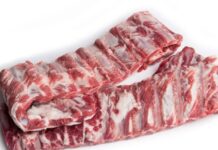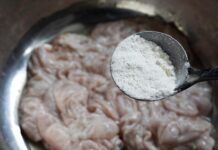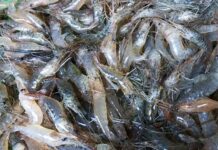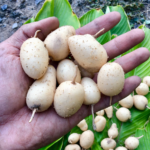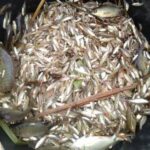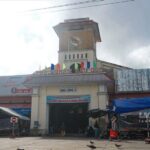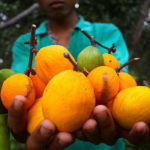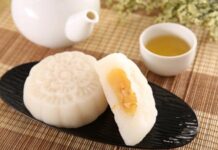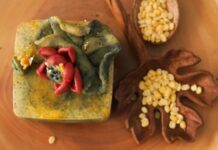Located about 60km east of Ben Tre ward, Ba Tri beach is just a 2-3 hour drive from Ho Chi Minh City. Unlike other famous tourist spots with crystal clear waters and pristine white sands, Ba Tri beach offers a unique beauty—a beauty that is deeply rooted in the alluvial soil and the river waters that flow into the sea.
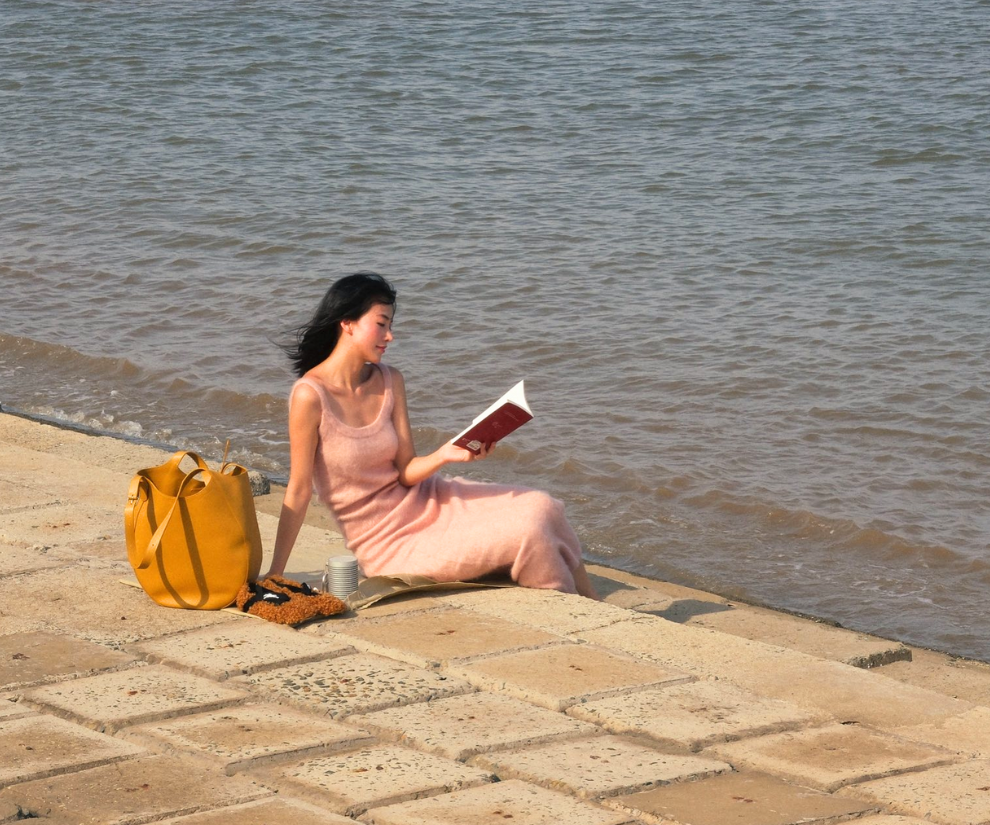
Phuong Khanh captures the essence of the sea dike at Con Nhan.
The beach here stretches out, sloping gently, with sand not white but a golden brown, formed from river sediments. The seawater in Ba Tri has a slight murkiness due to the alluvium, creating a sense of familiarity and tranquility, reminding visitors of a peaceful countryside.
What sets Con Nhan apart is its pristine natural state, untouched by excessive commercialization. Instead of a string of resorts, you’ll find accommodations provided by the local community, allowing visitors to immerse themselves in the lifestyle of the Mekong Delta region. This very authenticity attracts those seeking a secluded, serene escape, eager to explore and discover untouched territories.
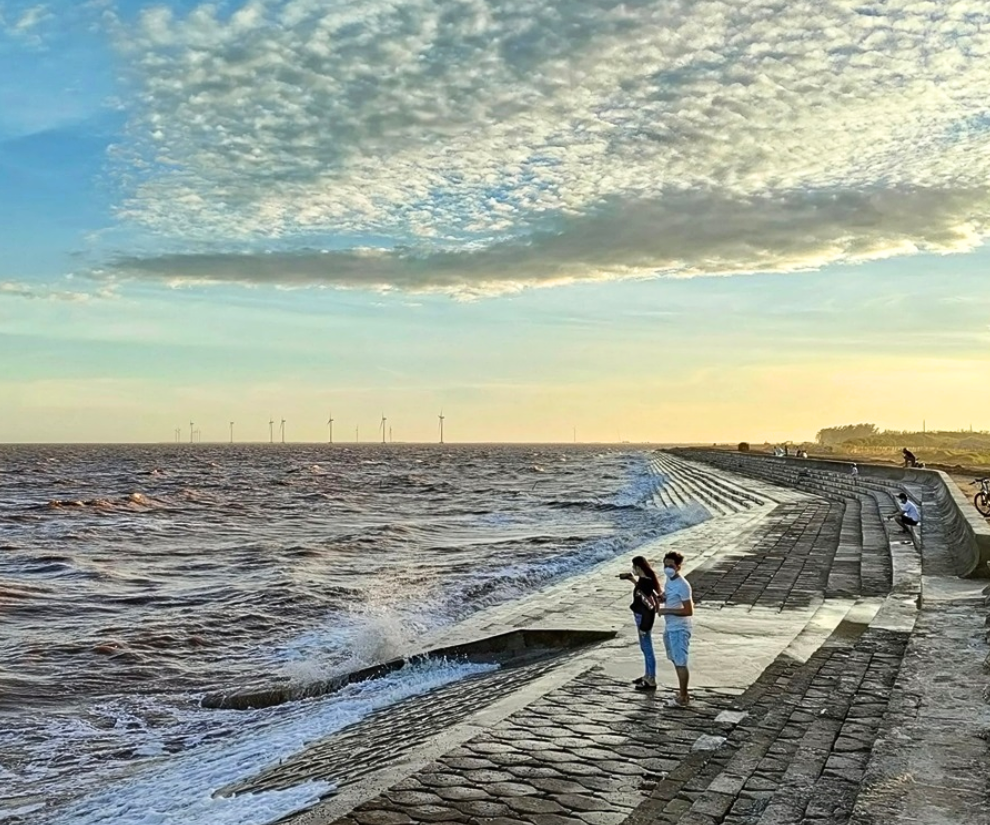
The pristine and rustic beauty of Con Nhan beach.
The ideal time to visit Con Nhan beach is during the dry season, from March to September. With pleasant weather and calm seas, this period is perfect for outdoor activities such as swimming, camping, boating, or collecting clams and snails. The rainy season, from October to February, may hinder your experience if you plan on camping or exploring the deeper areas of the beach.
Additionally, if possible, try to visit on the full moon or the first day of the lunar month when the tide is at its lowest. This is when the tidal flats are most exposed, offering a unique opportunity to venture further out to sea by buffalo cart or boat, and truly immerse yourself in the local fishing community’s way of life.
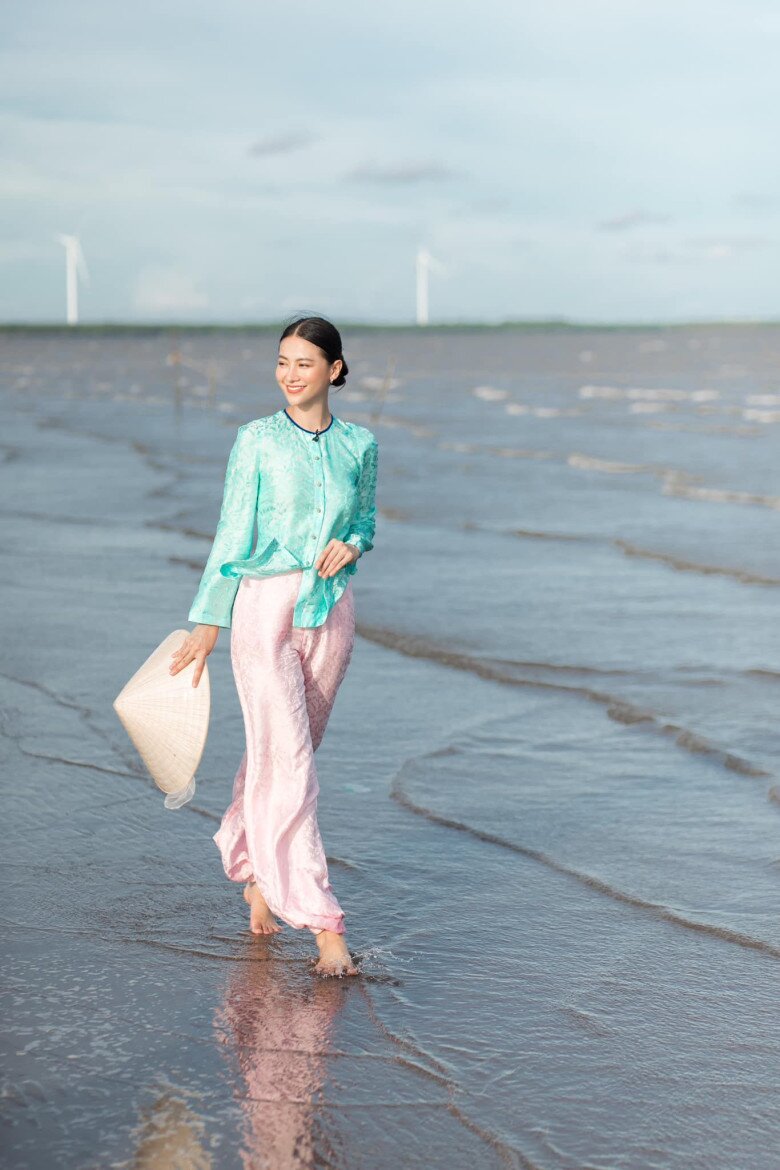

As the tide recedes, the beach transforms, revealing a stunning tidal flat—a perfect setting for a stroll and some memorable photos.
One of the most popular experiences among visitors is a buffalo cart ride out to the clam fields. During low tide, you can roll up your pants and wade through the mud to collect clams and snails alongside the locals. It’s not just a fun activity but also offers insight into the livelihood of the coastal community. Many visitors enjoy the hands-on experience of catching their own clams and then preparing and savoring their catch on the spot.
If you’re traveling with a large group, consider organizing a beach bonfire, complete with seafood barbecue and a sunrise welcome—a unique, adventurous experience. Moreover, as this area is not heavily exploited, the seafood here is exceptionally fresh and affordable: clams, blood cockles, shrimp, and crab can all be purchased directly from the source.
After a day of swimming, playing, and feasting, don’t forget to explore the local markets to immerse yourself in the regional culture. Note that the market opens daily at 2 pm, with the peak hours being around 3 pm. To get the best deals on fresh seafood at incredibly low prices, time your visit accordingly. You can also ask for contact information to place advance orders if you’re looking to buy in bulk for future consumption or as gifts for loved ones.
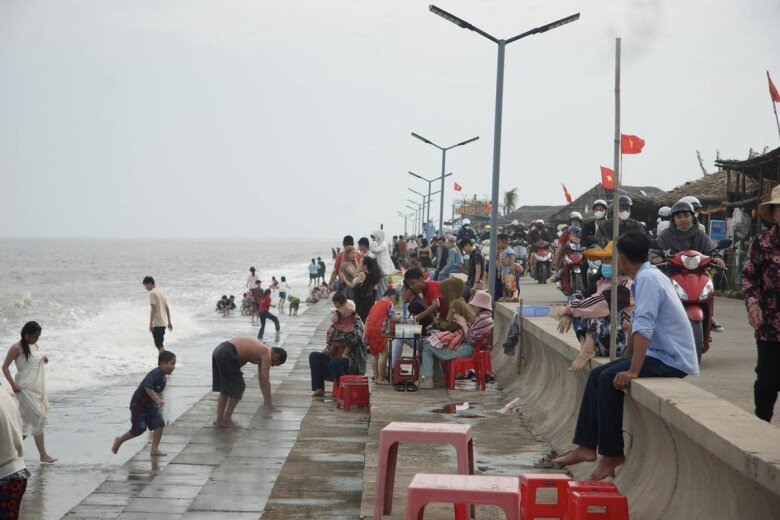
The local fishing village and market, located right next to the beach, attract many tourists who come to explore and shop. It is dubbed a “seafood paradise” due to the exceptional freshness of the seafood, caught daily by the local fishing fleet, coupled with extremely reasonable prices.
From Ba Tri beach, you can also visit the Nguyen Dinh Chieu relic site or the tomb of Phan Thanh Gian, adding cultural and historical depth to your trip. Other notable attractions in Ba Tri include the Vam Ho bird sanctuary, the Bao Thanh salt fields, and the famous Son Doc rice paper production site.
Con Nhan is not just about natural beauty; it also boasts a unique culture, reflected in the simple lives of the local fishermen. Along the Con Nhan beach, you’ll encounter small fishing villages with humble homes, traditional fishing boats, and nets, and friendly, hospitable fishermen.
So, if you’re seeking a peaceful getaway, away from the hustle and bustle, Ba Tri beach in Ben Tre ward, Vinh Long province, is an excellent choice. Despite its proximity to Ho Chi Minh City, it retains its rustic, pristine, and authentic charm.
“The Underground Treasure”: A Delicacy with a Unique Name, Harvested Once a Year, This Dish is a Nostalgic Taste of Childhood for Many in the Mekong Delta Region of Vietnam.
“A treasured delicacy in the Mekong Delta region of Vietnam, the humble ‘củ lùn’ or ‘knee-high taro’ is a seasonal treat, with a harvest that graces the tables of locals just once a year. This peculiar yet endearing name evokes a sense of nostalgia for many, transporting them back to their childhoods spent in the lush and bountiful waterways of the South.”













